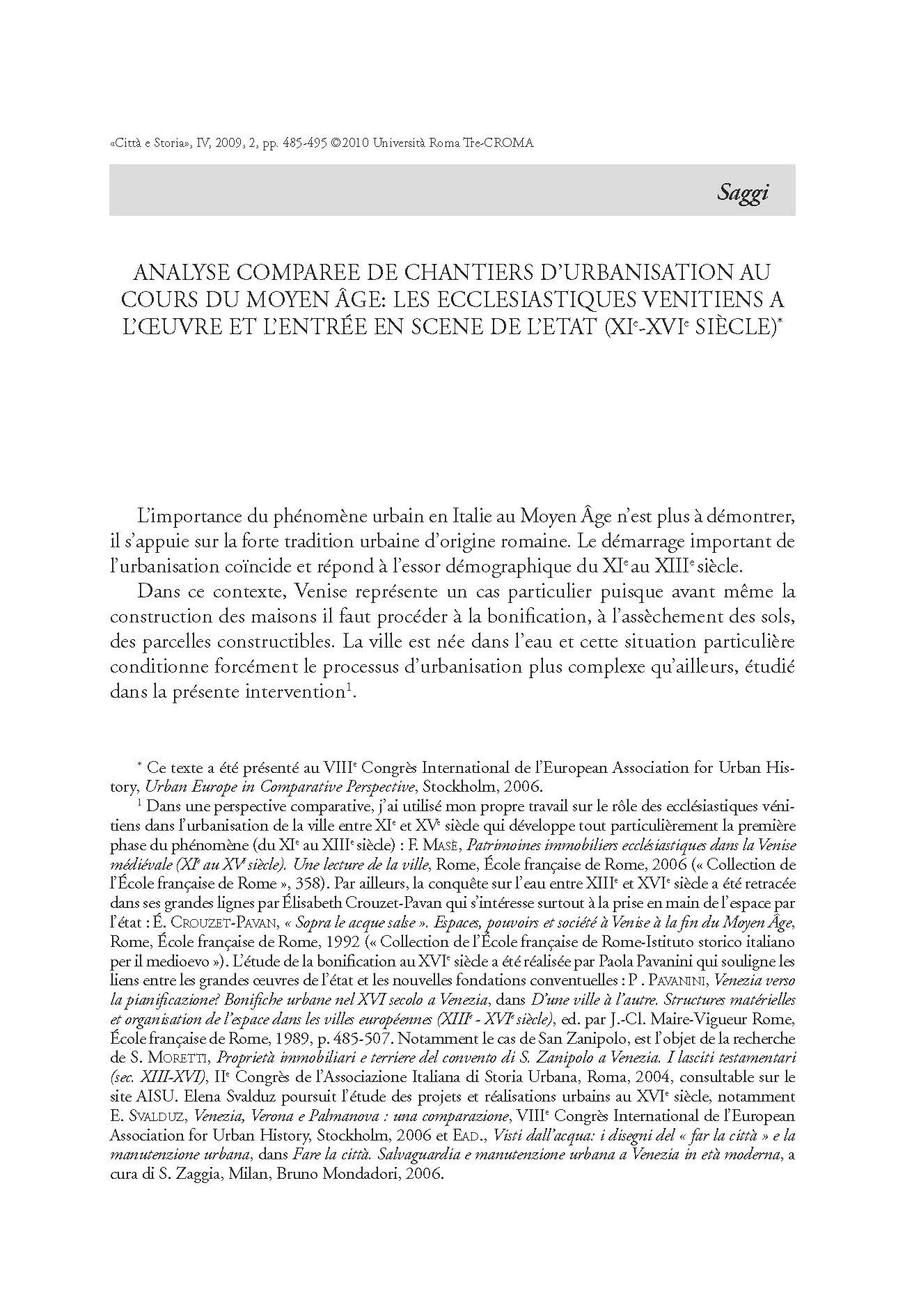Analyse Comparee de chantiers d’urbanisation au cours du Moyen Âge : les ecclesiastiques venitiens a l’æuvre et l’entrée en scene de l’etat (XIe-XVIe siècle)
6,00 €
After outlining the chronological framework and the subjects involved in land reclaiming in Venice between the 11th and the 16th centuries, this essay focuses on urban development comparing, in its different phases of development, the methods, means and objectives favoured by the protagonists of these ventures, be they public or private.
Between the 15th and the 16th centuries, through large scale urban development operations, the State took on the role it had previously encouraged the monasteries to play. The State initiates the last major land reclaim and housing development operations and the monasteries participate in them taking advantage of the framework provided by the public authorities. Therefore monasteries maintain their prominent role in the city’s growth, yet the way they are involved has changed. If once they controlled the process in its entirety, now they are mere partners in the process, milestones of the city’s growth. Their social and religious role is enhanced.
After outlining the chronological framework and the subjects involved in land reclaiming in Venice between the 11th and the 16th centuries, this essay focuses on urban development comparing, in its different phases of development, the methods, means and objectives favoured by the protagonists of these ventures, be they public or private.
Between the 15th and the 16th centuries, through large scale urban development operations, the State took on the role it had previously encouraged the monasteries to play. The State initiates the last major land reclaim and housing development operations and the monasteries participate in them taking advantage of the framework provided by the public authorities. Therefore monasteries maintain their prominent role in the city’s growth, yet the way they are involved has changed. If once they controlled the process in its entirety, now they are mere partners in the process, milestones of the city’s growth. Their social and religious role is enhanced.

